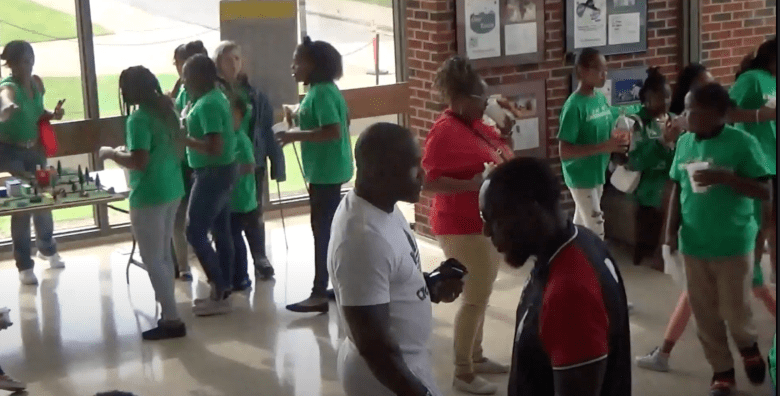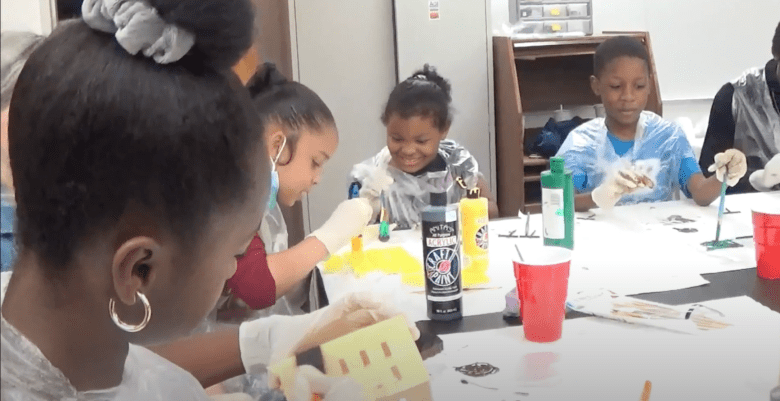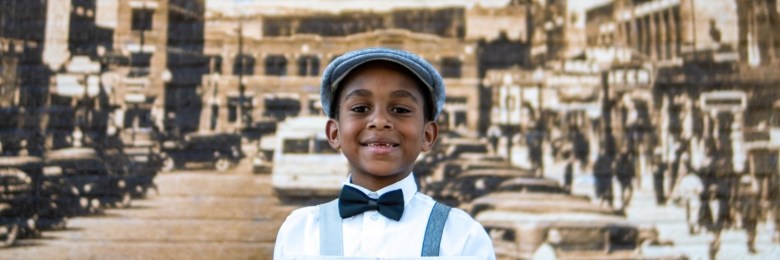|
Listen to this article here
Getting your Trinity Audio player ready...
|
GREENWOOD Dist.--Kimberly Jones remembers watching her grandpa build his own home back when white realtors would largely refuse to sell homes to Black people. As a science teacher in Lawton, Oklahoma, Jones taught her students to recreate the self-reliance that birthed Black Wall Street through the construction of 3-D models of the most prosperous Black neighborhood in U.S. history.
“I wanted the kids to build the model from 1920 because I wanted to show the kids how it potentially looked prior to the massacre. A lot of people don’t look at what happened before,” Jones told The Black Wall Street Times.

As a science teacher for Lawton Public Schools and the Science Department Chair at MacArthur High School, Jones wanted to teach the engineering component of STEM (science, technology, engineering and math) in a creative way. So, during the summer of 2022, she and her students went to work.
With help from Lawton City Councilor Onreka Givens-Johnson, who applied for grants to fund the project, and experts at Cameron University, the students designed models of the once-wealthiest Black business district through 3-D printing.

On Monday, May 22, the teacher will showcase the project at the Greenwood Cultural Center in Tulsa.
“Once it was completed the community loved it, and the kids loved it,” Jones said. “Not only did they talk about the structure and the landscape prior to the massacre, I made them study different individuals. So, the kids held up the posters, and the people could ask about the individuals who owned the businesses.”
Remembering Dr. A.C. Jackson
One of the notable figures the students learned about included Dr. Andrew Chesteen Jackson. Recognized as the most capable Black surgeon at the time, Dr. A.C. Jackson was a specialist in treating infectious diseases and served patients of all races. At 42 years old, as he raised his arms to surrender to the white mob on May 31, 1921, Dr. A.C. Jackson was shot dead in cold blood.
Yet during his short life, he proved the potential for any person to become successful regardless of skin color.
“He was the foremost colored physician in the southwest and was held in high regard not only by members of his own race, but also by many prominent whites,” The Tulsa Daily World wrote days after the massacre, according to archives shared with the National Institutes of Health.
The National Medical Association, which has represented African American physicians since the late 1800s, recognized the huge loss Dr. Jackson’s death represented to the community. The NMA established a Tulsa Doctor’s Relief Fund immediately after the massacre.
Reclaiming the narrative of the brilliance of Black Wall Street
Today, the Greenwood Rising Museum sits on the land that once housed Dr. Jackson’s medical practice on Black Wall Street.
“My family, myself, we take umbrage at the fact that folks who are not related to us are trying to prevent us from protecting the legacy of our great relative,” Dr. Jackson’s great-great nephew John Adams said in March after a court hearing in which lawyers for the museum and the Hille Foundation argued that Adams didn’t have a right to oversee the land.
Determined to show the prowess of Black Wall Street’s leaders, Jones said she’s excited to showcase the project at the Greenwood Cultural Center on Monday.
“It was important to me because, being from Oklahoma, there was so much history that was not in our history books,” Jones told The Black Wall Street Times. With Republicans in Oklahoma and nationwide launching attacks on Black history and diversity programs, Jones thought it was the perfect time.
“It’s a good way to teach our kids from a different perspective. Because to me the courage and wisdom of those who were on Black Wall Street, that needs to be taught to our kids,” Jones said.
Honoring “Magic City”
Moving forward, Jones is working on a screenplay titled “The Doctor’s Letters” about Dr. Jackson and the many Black doctors that were prominent in the state before the massacre.
Photos taken in May 1920 show dozens of Black medical, dental and pharmaceutical professionals at a meeting of the State Medical, Dental and Pharmaceutical Association in front of Williams Dreamland Theatre on Black Wall Street.
“Do we even have that many [Black] doctors now,” Jones said.

“The visitors to the State Medical, Dental and Pharmaceutical which met in Tulsa last week will not soon forget the generous hospitality extended to them by the citizens of the “Magic City” in the real Tulsa way,” the description on the 1920 photo reads.



Comments are closed.